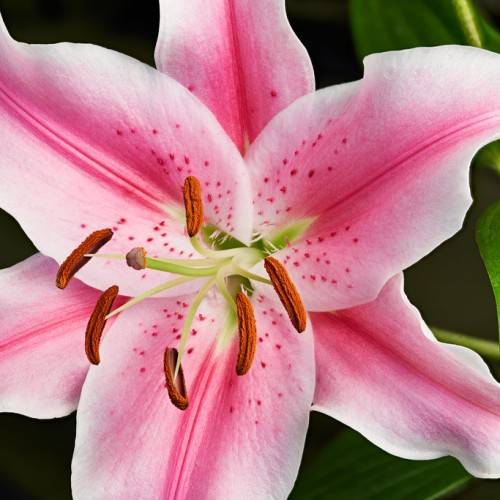
oriental lily
Lilium 'Tigerwoods'
Cycle:
Perennial
Watering:
Average
Hardiness Zone:
4 - 9
Flowers:
Flowers
Sun:
Full sun,part shade
Leaf:
Yes
Growth Rate:
High
Maintenance:
Moderate
watering
Oriental lilies prefer moist soil. They should be watered regularly and lightly to avoid overwatering. The soil should be kept slightly damp, not soggy.Water when the top inch or so of the soil dries out, providing 1-2 inches of water once a week. In warm weather, slightly more frequent watering may be necessary. In the peak of summer, water every few days or as often as necessary to keep the soil moist. Reduce watering in fall, as the plant enters its dormancy period. Avoid waterlogging the soil, as this can lead to root rot and can harm the plant.
sunlight
The amount and timing of sunlight required by the Oriental lily (Lilium 'Tigerwoods') depends on where the plant is being grown. Generally, this plant prefers partial sun, meaning about 4 to 6 hours of direct sun exposure each day. However, for more northern latitudes, full sun for 6 to 8 hours a day is preferred. For southern climates, it is best to give the Oriental lily a little bit of shade, such as 2 to 4 hours of full sun each day. If the plant gets too much sun, it may become scorched or wilted. Additionally, if there is not enough light provided, the plant may become less vibrant, have weaker stems, and the flowers may not bloom as well.
pruning
Oriental lily (Lilium 'Tigerwoods') should generally be pruned in early spring, just as the new shoots are appearing. Pruning should consist of deadheading the faded flowers, cutting the stems down to a height of 5 to 6 inches, and removing any damaged or weak stems or foliage. This will ensure the plant has enough vitality to flower again and will also ensure that the flowers are uniform in size and shape. After each flowering, the stems can also be cut back further to stimulate new growth, and can be completely cut back to the ground after the third or fourth flowering.
